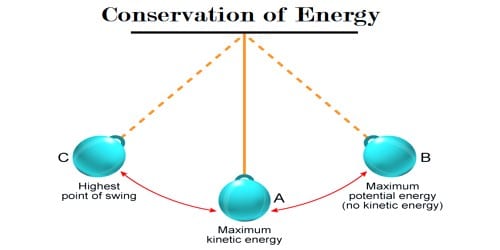Conserving energy in the home is not merely an individual choice; it is a communal responsibility that reverberates through our society and the environment. As we grapple with the implications of climate change and the depletion of natural resources, adopting energy-efficient practices at home is essential. This article outlines practical, actionable strategies that every household can embrace to significantly reduce energy consumption and foster a more sustainable living environment.
First and foremost, understanding how energy consumption occurs in your home is vital. The typical household is a labyrinth of energy use, primarily attributed to appliances, heating and cooling systems, lighting, and electronics. By gaining insight into these categories, you can identify opportunities for energy conservation. Consider this as a first step towards becoming more conscientious about your energy use.
One of the most effective and immediate actions is to perform an energy audit. This involves systematically evaluating your home to pinpoint energy drains. Various tools are available online to help you conduct a DIY audit, but enlisting the services of a professional energy auditor can provide a more comprehensive analysis. An energy audit will reveal inefficiencies, allowing you to take targeted measures to rectify them.
Lighting is a pervasive yet often overlooked area where homeowners can make impactful changes. Transitioning to LED or CFL bulbs dramatically cuts down energy use compared to traditional incandescent bulbs. While the initial investment may be higher, the longevity and efficiency of these bulbs encompass cost savings that accumulate over time. Moreover, utilizing natural light can also enhance your interior ambiance. Open your curtains during daylight hours, and embrace the sun’s energy for free illumination.
In terms of appliances, each choice matters. Investing in ENERGY STAR-rated appliances guarantees that your choices meet stringent efficiency guidelines set by the EPA. These appliances use significantly less energy, offer sustainable operation, and often come with rebates or incentives, making them a financially prudent option. When appliances must be replaced, prioritize energy efficiency without compromising functionality.
Another pivotal area for energy conservation lies in heating and cooling. The HVAC system is typically one of the largest energy consumers in a household. Regular maintenance, such as changing filters and ensuring ducts are sealed and insulated, enhances operational efficiency. Additionally, consider upgrading to programmable or smart thermostats, permitting you to tailor your heating and cooling schedules based on your daily routine, ensuring you’re not wasting energy when you’re not home.
Moreover, simple behavioral adjustments can lead to notable energy savings. Set your thermostat a few degrees lower in winter and higher in summer; this small shift can result in substantial energy conservation over time. Wearing appropriate clothing for the season, like sweaters in winter, allows you to emulate a more energy-efficient environment without sacrificing comfort.
Insulation should not be disregarded either. Proper insulation in walls, attics, and floors minimizes heat loss in the winter and keeps cool air inside during the summer. Consider investing in energy-efficient windows or using window treatments to control temperature gain or loss, ensuring that your HVAC system operates less frequently.
In addition to insulation, household habits can drastically influence energy consumption. Unplugging devices when not in use is crucial. Many electronics consume energy in standby mode, an insidious form of energy loss often referred to as “phantom load.” By utilizing power strips, you can conveniently switch off multiple devices at once, curbing this leakage.
Additionally, changing laundry habits contributes to energy conservation. Opt for cold water washes and air dry clothes whenever feasible, as dryers are significant energy consumers. Full loads also maximize machine efficiency, whether in the dishwasher or washing machine, thereby conserving both water and energy.
Furthermore, consider the implications of water heating. Heating water for showers, cleaning, and cooking can be expensive and energy-intensive. Lowering your water heater temperature to 120 degrees Fahrenheit strikes a balance between comfort and conservation. Insulating your water heater and the first few feet of hot and cold water pipes can also enhance efficiency.
On a larger scale, adopting renewable energy sources, such as solar panels, can yield long-term financial benefits and significantly reduce your home’s carbon footprint. While initial costs may be prohibitive for some, state and federal incentives can mitigate expenses, rendering this an increasingly viable option for the eco-conscious homeowner.
Lastly, cultivating energy awareness within the household is critical. Making this a family endeavor fosters collective responsibility. Educate family members about the significance of energy conservation and involve them in practical measures. Assign tasks like turning off lights or unplugging devices when not in use. Encouraging mindfulness about energy consumption establishes a culture of sustainability and eco-friendliness.
In conclusion, the journey toward energy conservation at home is multifaceted and begins with awareness and intention. From energy audits to behavioral changes, the potential for reducing energy consumption is vast. Each action, no matter how small, adds up to create a substantial impact, fostering a more sustainable future for subsequent generations. By systematically implementing these practical tips and shifting your household perspective towards energy use, you not only enhance your quality of life but also contribute significantly to the health of our planet.






